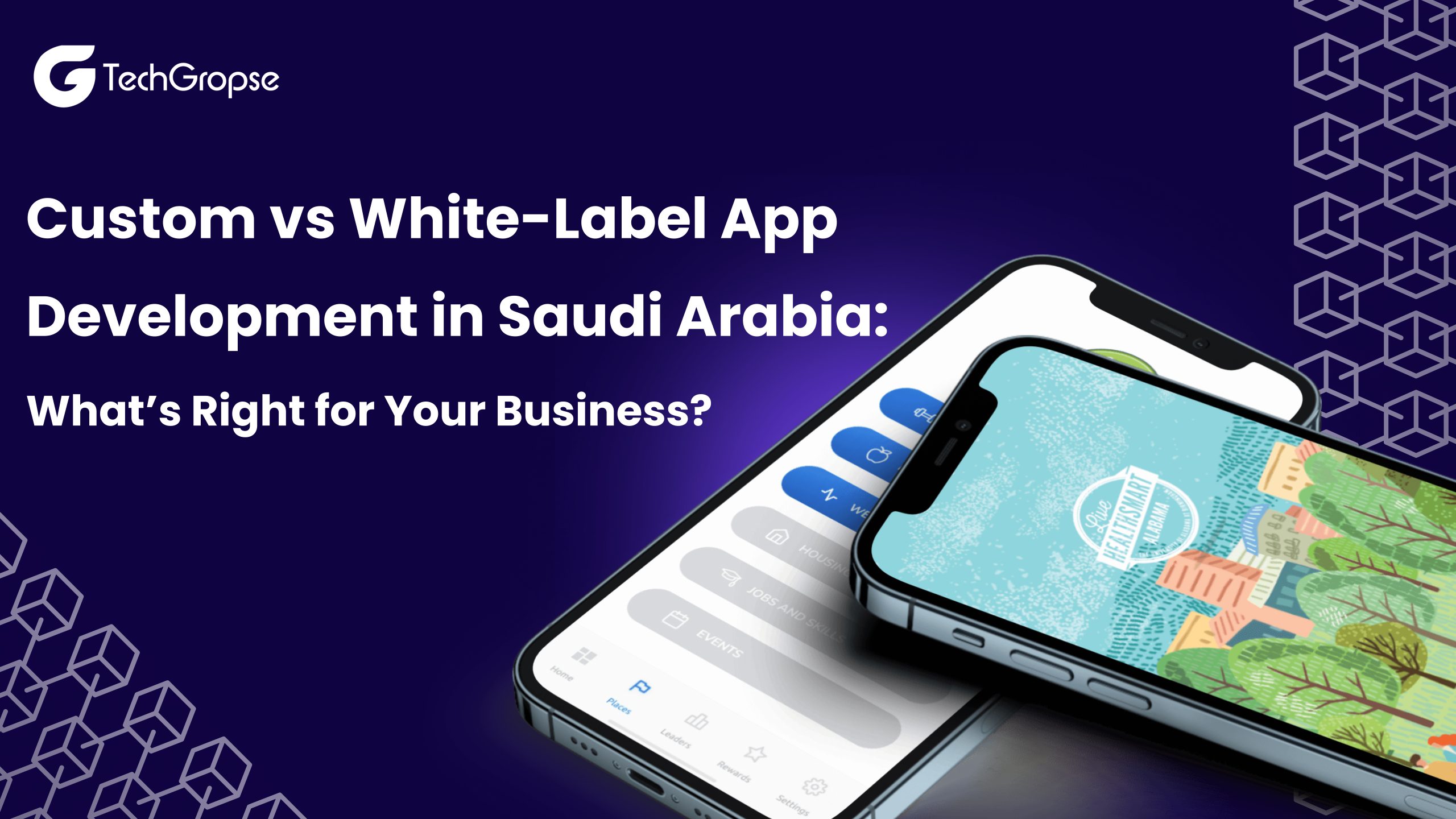|
“Imagine a classroom where learning never stops, even if the teacher is absent. Students excitedly engage with lessons that adapt to their individual needs and interests. It is the future being shaped by AI-powered substitute teacher apps.” |
Did you know that the market for artificial intelligence (AI) in education was valued at USD 2.5 billion in 2022?
It’s expected to grow significantly, reaching USD 3.45 billion in 2023 and soaring to USD 23.82 billion by 2030.
It represents an impressive compound annual growth rate (CAGR) of 38.00% from 2024 to 2030.
This move towards using digital tools is helping schools and universities provide more personalized and effective learning. Because of this, more people want AI in education, making the market grow quickly.
As schools struggle with teacher shortages and the need to cater to diverse learning styles, artificial intelligence in education industry is stepping in to make education smoother and more effective.
The traditional classroom is changing rapidly, thanks to the rise of artificial intelligence. AI-powered substitute teacher apps are leading this change by stepping in when a teacher is unavailable.
But they do much more than just fill in; they personalize lessons, making them interactive and engaging.
These apps can create custom lesson plans, provide instant feedback, and even track student progress in real time.
It means that teachers can spend less time on administrative tasks and more time focusing on their students.
Join us as we explore how AI-powered substitute teacher apps are revolutionizing education.
Discover how AI in education app development is not just solving problems but transforming the entire educational experience for students and teachers alike.
What are AI-powered substitute Teacher Apps?
AI-powered substitute teacher apps are smart tools that step in when a teacher is absent. They use artificial intelligence to create personalized lessons for students, making learning fun and engaging.
Artificial intelligence in education apps can plan lessons, give instant feedback, and track student progress in real time. They help ensure that students keep learning without interruptions and can adapt to each student’s needs.
By using AI-powered substitute teacher apps, schools can maintain high teaching standards, reduce the workload on teachers, and provide a more tailored and interactive learning experience for students.
The Growing Need for Innovation in Education
Before delving into the specifics of AI-powered substitute teacher apps, it’s essential to understand the context driving this innovation.
- Teacher Shortages: Many places around the world need more qualified teachers. This problem gets worse because teachers often leave their jobs or get burned out, leading to uneven teaching quality.
- Administrative Burdens: Teachers spend a lot of their time on paperwork and other administrative tasks. It takes away from the time they can devote to teaching and engaging with students.
- Diverse Learning Needs: Classrooms are full of students who learn in different ways and have different needs. Traditional teaching methods often can only meet some of these diverse needs effectively.
- Technological Integration: Even though students use technology every day, many schools and universities need to be faster to incorporate these tools into their teaching in meaningful ways.
How AI-Powered Substitute Teacher Apps Work?
AI-powered substitute teacher apps offer a solution to these challenges by leveraging advanced technologies to support and enhance the teaching process.
These apps use artificial intelligence to replicate and even improve upon the functions of a human substitute teacher.
Here’s how AI in E-learning app development works and why they’re revolutionary.
- Machine Learning and Personalization: At the core of these apps is machine learning, a subset of AI that enables systems to learn from data and improve over time. These apps can analyze students’ past performance, learning styles, and preferences to tailor lessons and activities that cater to individual needs.
- Automated Lesson Planning: AI-powered apps can generate comprehensive lesson plans based on the curriculum and specific objectives set by the regular teacher. It ensures continuity in learning and minimizes disruption when a substitute is needed.
- Interactive and Adaptive Learning: These apps often include interactive elements such as quizzes, games, and virtual experiments. They can adapt in real time to student responses, providing instant feedback and adjusting difficulty levels to keep students engaged and challenged.
- Real-Time Analytics and Reporting: AI-powered apps can track student progress in real-time, providing valuable insights to both the substitute and the regular teacher. This data can highlight areas where students excel or struggle, allowing for targeted interventions.
- Natural Language Processing (NLP): Advanced NLP algorithms enable these apps to understand and respond to student queries. It facilitates a more interactive and engaging learning experience. It can be particularly useful in answering common questions and providing explanations.
What are the Benefits of AI-Powered Substitute Teacher Apps?
The adoption of AI-powered substitute teacher apps brings a host of benefits for students, teachers, and educational institutions:
1. Addressing Teacher Shortages
One of the most immediate benefits is addressing the chronic issue of teacher shortages. These apps can step in seamlessly when a substitute is needed, ensuring that learning continues without interruption. It not only maintains the flow of education but also reduces the strain on existing staff.
2. Enhancing Learning Experiences
AI-powered apps offer personalized learning experiences that traditional methods often can’t match. By tailoring content to individual students’ needs and providing interactive elements, these apps can make learning more engaging and effective. This personalization helps in catering to diverse learning styles and paces, ensuring that every student is included.
3. Reducing Administrative Burden
Teachers are the heart of education, but administrative tasks often consume a significant portion of their time. AI-powered apps can automate many of these tasks, freeing up teachers to focus more on instruction and student interaction. This shift can lead to improved teaching quality and better student outcomes, offering a glimmer of hope in the face of overwhelming administrative burdens.
4. Facilitating Continuous Professional Development
These apps can also serve as a valuable resource for teachers’ professional development. By analyzing data on student performance and engagement, teachers can gain insights into effective teaching strategies and areas where they might improve. Additionally, the AI can recommend resources and training based on these insights, fostering continuous improvement.
5. Ensuring Consistency and Quality
When a substitute teacher is needed, maintaining the consistency and quality of education can be challenging. AI-powered apps ensure that the curriculum is followed precisely and that the teaching methods are consistent with those of the regular teacher. It minimizes disruption and maintains a high standard of education.
9 Key Features: AI-Powered Substitute Teacher App Development
AI-powered substitute teacher apps come with a range of features designed to enhance the learning experience and support teachers:
- Personalized Learning: The app tailors lessons to each student’s learning style and needs, ensuring that everyone gets the help they need.
- Automated Lesson Planning: It generates lesson plans based on the curriculum, ensuring continuity when a regular teacher is absent.
- Interactive Learning: The app includes quizzes, games, and virtual experiments to keep students engaged and make learning fun.
- Real-Time Feedback: Students receive instant feedback on their performance, helping them understand and improve quickly.
- Progress Tracking: The app tracks student progress in real time, providing valuable insights to teachers for better support and intervention.
- Natural Language Processing (NLP): Advanced NLP allows the app to understand and respond to student questions, making interactions more dynamic and helpful.
- Administrative Support: The app helps reduce the administrative burden on teachers by automating tasks like grading and attendance.
- Accessibility: It ensures that learning materials are accessible to all students, regardless of their individual needs.
- Scalability: The app can be easily scaled to support multiple classrooms and schools, making it a versatile tool for educational institutions.
Want to Build an AI Powerd Substitute Teacher App? Here is How?
While a fully AI-powered substitute teacher is not quite there yet. It is the perfect time to partner with an E-learning app development company. You can build an app that utilizes AI to make finding and managing substitute teachers more efficient.
Here’s a roadmap to get you started:
1. Define Objectives
Clearly outline the goals and functionalities of your app. Determine what tasks the AI will assist with, such as lesson planning, classroom management, or personalized learning.
2. Gather Data
Collect educational resources such as lesson plans, textbooks, quizzes, and teaching materials. Also, gather data on common classroom scenarios, student behaviour patterns, and teaching strategies.
3. Select AI Technologies
Choose the AI technologies that best suit your app’s objectives. It could include Natural Language Processing (NLP) for understanding and generating text, Machine Learning (ML) for personalized recommendations, or Computer Vision for analyzing classroom dynamics.
4. Develop Algorithms
Hire AI app developers who design and implement AI algorithms to perform the desired tasks. For example, create algorithms to generate lesson plans based on curriculum standards, analyze student engagement using facial recognition, or recommend activities tailored to individual student needs.
5. Build the App
A reputable AI development company build the app using programming languages and frameworks suitable for AI development. It includes Python with TensorFlow or PyTorch. Implement user interfaces for inputting data, accessing AI features, and displaying results.
6. Integrate AI Features
You should hire dedicated developers who integrate the AI algorithms into the app’s functionality. It may involve connecting to external APIs or libraries for NLP, ML, or Computer Vision tasks.
7. Test and Iterate
Thoroughly test the app to ensure that AI features work as intended and provide value to users. Gather feedback from substitute teachers and students to identify areas for improvement.
8. Optimize Performance
Fine-tune the AI algorithms and app functionality to improve performance and usability. Optimize algorithms for speed, accuracy, and scalability to handle real-world classroom scenarios effectively.
9. Ensure Data Privacy and Security
Implement measures to protect user data and ensure compliance with privacy regulations. Encrypt sensitive information, secure user authentication, and regularly update security protocols to safeguard against potential threats.
10. Deploy and Monitor
Deploy the app to production environments and monitor its performance in real-world settings. Artificial intelligence app development company continue to collect usage data, analyze user feedback, and make ongoing improvements to enhance the app’s effectiveness and user satisfaction.
Real-World Applications and Success Stories
AI-powered substitute teacher apps are already making a difference in classrooms around the world.
Here are a few examples of how these tools are being used to enhance education:
Example 1: Improving Student Engagement
In a pilot program in a school district in California, AI-powered substitute teacher apps were introduced to help cover classes when regular teachers were absent. The results were impressive. Students reported higher levels of engagement and interest in their lessons, thanks to the interactive and personalized nature of the AI-generated content. Teachers also appreciated the real-time analytics, which provided insights into student performance that they could use to tailor their instruction.
Example 2: Supporting Diverse Learning Needs
A middle school in Texas faced challenges in meeting the diverse learning needs of its students. By implementing AI-powered substitute teacher apps, the school was able to provide personalized learning experiences for each student. The apps adapted to different learning styles and paces, ensuring that all students could keep up with the material. The school saw a noticeable improvement in student performance and a reduction in the achievement gap.
Example 3: Reducing Teacher Burnout
In a large urban school district, teacher burnout was a significant issue, leading to high turnover rates and inconsistent teaching quality. The introduction of AI-powered substitute teacher apps helped alleviate some of the administrative burdens on teachers, allowing them to focus more on teaching and less on paperwork. This led to a more positive and productive work environment, reducing burnout and improving teacher retention.
Challenges and Considerations of AI in the Education Industry
While AI-powered substitute teacher apps offer significant benefits, their implementation is challenging. If you want to overcome these challenges you must consult with a mobile App Development company in Dubai. Addressing these issues is crucial for maximizing the potential of these innovative tools:
1. Data Privacy and Security
The use of AI in education involves the collection and analysis of vast amounts of student data. Ensuring the privacy and security of this data is paramount. Educational institutions must adopt robust data protection measures and comply with relevant regulations to safeguard students’ information.
2. Accessibility and Equity
The benefits of AI-powered apps could be unevenly distributed, exacerbating existing educational inequalities. Ensuring that all students have access to the necessary technology and internet connectivity is essential for promoting equity in education.
3. Teacher Acceptance and Training
The successful integration of AI-powered apps requires buy-in from teachers. Providing adequate training and support is essential to help teachers understand the benefits of these tools and how to use them effectively. Addressing concerns about job security and the role of AI in education can also facilitate acceptance.
4. Ethical Considerations
The use of AI in education raises ethical questions, such as the extent to which AI should be involved in the teaching process and the potential for bias in AI algorithms. Engaging stakeholders in discussions about these issues and developing ethical guidelines for AI use in education is crucial.
The Future of Education with AI
The integration of AI-powered substitute teacher apps is just the beginning of a broader transformation in education. As AI technology continues to evolve, its potential applications in education will expand, offering new opportunities to enhance teaching and learning.
1. Intelligent Tutoring Systems
Beyond substitute teaching, AI-powered intelligent tutoring systems can provide one-on-one support to students, offering personalized instruction and feedback. These systems can help students master complex subjects and provide additional support where needed.
2. Predictive Analytics for Student Success
AI can analyze vast amounts of data to identify patterns and predict student outcomes. It can enable educators to intervene early and provide targeted support to students at risk of falling behind, improving overall academic performance and retention rates.
3. Virtual and Augmented Reality
The combination of AI with virtual and augmented reality technologies can create immersive learning experiences. Students can explore historical events, conduct virtual science experiments, and engage in interactive simulations that enhance understanding and retention.
4. Lifelong Learning and Skills Development
AI can facilitate lifelong learning by offering personalized learning paths and recommendations based on an individual’s career goals and interests. It can help individuals stay competitive in an ever-changing job market and foster a culture of continuous learning.
Popular AI-Powered Substitute Teacher App
| App Name | Number of Downloads | Number of Active Users | Rating |
| SubTeach AI | 1,000,000+ | 200,000+ | 4.6 |
| TeachMate | 800,000+ | 150,000+ | 4.5 |
| ClassAssist | 700,000+ | 120,000+ | 4.7 |
| EduAI | 600,000+ | 100,000+ | 4.4 |
| AI EduHub | 500,000+ | 90,000+ | 4.6 |
| SubSmart | 400,000+ | 80,000+ | 4.8 |
| TeacherGenius | 350,000+ | 70,000+ | 4.5 |
| Classroom Companion | 300,000+ | 60,000+ | 4.7 |
| IntelliTeach | 250,000+ | 50,000+ | 4.6 |
| EduBot | 200,000+ | 40,000+ | 4.5 |
Conclusion
AI-powered substitute teacher apps represent a transformative step forward in the education industry.
By addressing critical challenges such as teacher shortages, administrative burdens, and diverse learning needs, these innovative tools have the potential to revolutionize the classroom experience.
While challenges remain, careful consideration of ethical, privacy, and accessibility issues can help ensure that the benefits of AI are realized equitably.
As we continue to explore the possibilities of AI in education, the future promises a more personalized, engaging, and effective learning experience for students everywhere.
The education industry is on the brink of a major transformation, and AI-powered substitute teacher apps are leading the way.
With their ability to provide personalized, interactive, and adaptive learning experiences, these tools are set to revolutionize how we teach and learn.
By addressing key challenges and leveraging the power of AI, we can create a future where education is more accessible, effective, and enjoyable for everyone.
FAQ: Revolutionizing Education Industry With AI-Powered Substitute Teacher App
1. How does this app work?
It matches available substitute teachers with schools based on things like where they are, what subjects they know, and when they’re free. It makes scheduling easy and takes care of the boring paperwork stuff.
2. What’s so great about using this app?
It makes life easier for schools by finding substitutes fast, which means less stress for teachers and no interruptions in learning for students. Plus, it helps schools connect with more substitute teachers who are a good fit for their needs.
3. Does this app mean regular teachers are out of a job?
Nope! It’s there to help out when teachers can’t be in class, like when they’re sick or need time off. Regular teachers are still the stars of the show.









